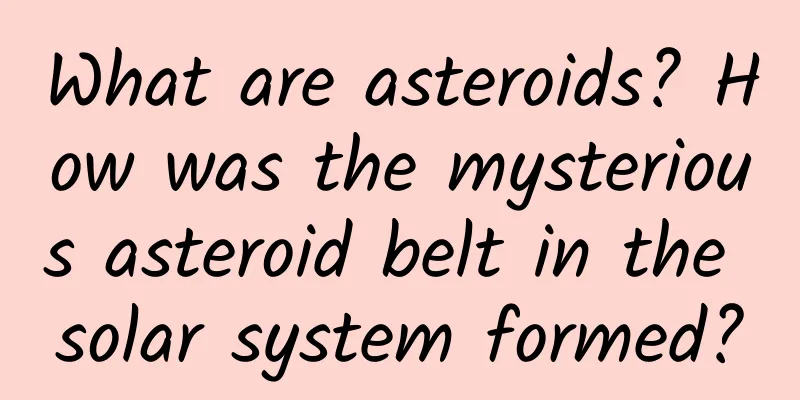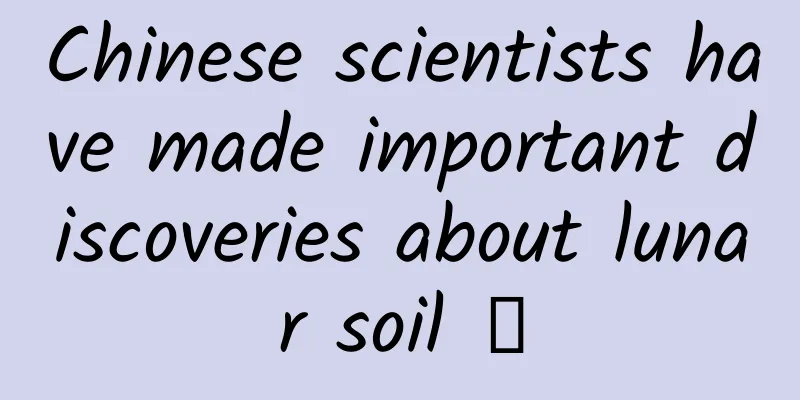What are asteroids? How was the mysterious asteroid belt in the solar system formed?

|
About 65 million years ago, the dinosaurs that ruled the Earth for 160 million years went extinct. Among the various hypotheses about the extinction of dinosaurs, one of the more mainstream is "asteroid impact". If the extinction of dinosaurs is really related to an asteroid, then this event is undoubtedly a major turning point in the history of the evolution of life on Earth. The impact of this asteroid not only changed the Earth's ecosystem, but also made us deeply aware of the huge influence of asteroids on the Earth. So, what exactly are asteroids? Where do they come from? And what potential threats do they pose to our Earth? Asteroids are celestial bodies in the solar system that orbit the sun similar to planets, but are much smaller in size and mass than planets. Most of them are distributed in the asteroid belt between the orbits of Mars and Jupiter. Some asteroids have special orbits that cross the orbit of the earth. These are called near-Earth asteroids. Asteroids have different shapes. Unlike planets, which have a regular spherical shape due to their own gravity, asteroids are shaped like potatoes, dumbbells, and irregular blocks. This is because asteroids have a small mass and their own gravity is not enough to reshape them into a spherical shape. Their sizes also vary greatly. The small ones may be only a few meters, and the large ones may be more than 100 kilometers in diameter. Ceres is the first asteroid discovered by humans, but it has now been redefined as a dwarf planet and is in the same category as Pluto. The discovery of Ceres dates back to 1801, when astronomers had not yet figured out the asteroid's status because it was too small and dark to meet the standards of a planet, but it was definitely not a star, comet, or satellite. Astronomers then used the term "asteroid" to describe Ceres and the newly discovered Pallas. Since then, scientists have discovered a large number of asteroids between the orbits of Mars and Jupiter. As of 2024, there are nearly 600,000 asteroids that have been numbered in this area. It is estimated that there are at least millions of asteroids gathered in this area, so this area between the orbits of Jupiter and Mars is also called the "asteroid belt." Why is there an asteroid belt between the orbits of Jupiter and Mars? There are many hypotheses about the origin of this asteroid belt. One of the more widely accepted hypotheses is that in the early days of the formation of the solar system, the matter around the sun gradually gathered to form planets. In the area between the orbits of Mars and Jupiter, a planet could have been formed, but due to the interference of Jupiter's strong gravity, the matter in this area could not gather to form a complete large planet, but collided and broke into pieces, eventually forming numerous asteroids. Another hypothesis is that the asteroid belt may be the debris produced by huge impacts of early planets. In the early days of the solar system, collisions between planets were relatively frequent. After some planets suffered violent impacts, some of their materials were ejected into space. These materials gradually gathered under the action of gravity to form the asteroid belt. When talking about asteroids, people may often confuse them with comets and meteors, but they are essentially different. Asteroids are mainly composed of rocks and metals, and their composition is similar to that of the planets in the solar system, mainly including silicates, iron, nickel, etc.; comets are mainly composed of ice, dust and rocks, among which the ice components include water ice, carbon dioxide ice, methane ice, etc. Comets are usually formed at the edge of the solar system, where the temperature is extremely low and volatile substances can exist in the form of ice. When a comet approaches the sun, the heat of the sun sublimates the ice on the surface of the comet, forming a long tail, which is also one of the most significant features of a comet; meteors are fragments of celestial bodies such as asteroids or comets. When these fragments enter the earth's atmosphere, they rub against the atmosphere to generate high temperatures, thereby burning and emitting light. If the meteoroid is not completely burned out in the atmosphere, the remaining part falls to the surface of the earth and becomes a meteorite. Although asteroid impacts are extremely rare, they still pose a potential threat to the Earth. Scientists speculate that if the diameter of an asteroid is between tens of meters and hundreds of meters, impacting the Earth may cause serious damage to local areas. For example, the Tunguska explosion in 1908 is believed to have been caused by an asteroid or comet fragment with a diameter of about 50 meters exploding in the air, and about 2,000 square kilometers of forest around the center of the explosion were razed to the ground. An asteroid with a diameter of more than 1 kilometer hitting the Earth may cause a global disaster. An impact of this magnitude will produce a huge shock wave that can instantly destroy a large area. At the same time, the impact will also stir up a large amount of dust into the atmosphere, which will block sunlight and cause the global climate to cool, which will undoubtedly bring great disasters to the Earth. In addition, if an asteroid falls into the ocean, the huge energy release may trigger a global tsunami, which will also cause a devastating blow to the Earth. By 2024, the number of near-Earth asteroids discovered has exceeded 36,000, of which those with a minimum distance of 0.05 AU and a diameter greater than 140 meters are defined as potentially threatening near-Earth asteroids, accounting for nearly one-tenth of the total. Scientists estimate that the probability of an asteroid with a diameter greater than 1 km hitting the Earth is about once every 700,000 years, while the probability of an asteroid with a diameter greater than 10 km hitting the Earth is even lower, about once every 100 million years. Although the probability is extremely low, once a collision occurs, the disaster caused to our Earth will be irreversible. In order to deal with the potential threat of asteroids to the Earth, scientists have taken a variety of preventive measures. First, through various astronomical observation equipment, such as ground-based telescopes and space probes, asteroids are monitored and tracked to detect potentially threatening asteroids as early as possible and accurately calculate their orbits. Secondly, scientists have proposed some technical solutions to deal with asteroid impacts. For example, by launching a spacecraft to impact an asteroid, the direction of its orbit can be changed and it can be deviated from the orbit of colliding with the Earth. However, this plan is still in the research and testing stage, and its implementation faces many technical challenges. As mysterious celestial bodies in the solar system, asteroids not only carry important information about the formation and evolution of the solar system, but also pose a potential threat to the safety of the Earth. Through in-depth research on asteroids, we can not only better understand the mysteries of the solar system, but also be fully prepared to protect our home planet and prevent asteroid impacts. Author: Xingzhong Chengguang Reviewer: Li Mingtao, researcher at the National Space Science Center of the Chinese Academy of Sciences Producer: Science Popularization Department of the China Association for Science and Technology Supervisor: China Science and Technology Press Co., Ltd., Beijing Zhongke Xinghe Culture Media Co., Ltd. |
>>: Can fish oil lower blood lipids? Many people may be eating it wrong...
Recommend
Summary and conclusion of Apple Store and Google Play app releases!
App release has become a crucial part of the prod...
Can soup made with evaporated milk be very nutritious? Who is not suitable for drinking milky white soup?
A few days ago, an online video showing "two...
Tsinghua Unigroup may acquire Apple's GPU supplier, and now it will have its own CPU and GPU
On April 3, Apple announced that it would stop us...
How do bed bugs grow? What should I put on my bed to keep bedbugs away?
Bed bugs are very annoying insects, also known as...
Scientists discover that plants can actually "talk"?
Poplar leaves rustle when wind blows through them...
Android Network Security Configuration
[[198282]] The Network Security Configuration fea...
Which one will die first under marketing, QQ Space or Moments?
Since Redmi used QQ Space as a sales platform, mo...
Tesla's new promotional method: It turns out that cars can be sold like this
Beijing time, July 30 morning news, Tesla announc...
Koi, showing off wealth and falling down... Analyzing the 5 core genes of popular content
What are the common characteristics of content th...
Serious vulnerability found in Apple iTunes
A major vulnerability recently appeared in Apple ...
Can the split posture make Xiaomi TV 3 worthy of the title of "next generation"?
Last week, the term "next generation" c...
Tesla poached top Microsoft designers to improve HUD head-up display
Now, they hope to create more innovative car desi...
Deloitte Consulting: 2019 Artificial Intelligence Manufacturing Application Survey Report
The application of artificial intelligence is exp...
The "Lotus Birthday Candles" from childhood have gone abroad and become a hit, with a loud sound that can last for a year?
I wonder if you still remember the "lotus bi...
10 basic skills necessary for operating Douyin
Douyin became a huge hit like a bolt from the blu...









